There are many different dual-cab utes on the market and as I have reviewed them for BabyDrive, I have found that installing child seats comes with varying degrees of difficulty! Mainly because until recently utes do not have to adhere to the same rules as cars when it comes to child restraint anchorages because they are classed as a commercial vehicle… CRAZY I know!!!
The Toyota Hilux and Ford Ranger are the two top-selling cars in Australia, not just utes but ALL cars!! So they are of course not just being used as work vehicles but family cars too.
I am often asked which is the easiest ute to fit child seats into so I thought I would share my answer with you. Based on my own experience I have found there are some common factors/contributors to the ease or difficulty of child seat installation:
- The position of the top tether anchorages If they are fixed behind the headrest there is often not enough distance to tighten the top tether strap. Or if they are behind the seat back often you cannot adjust the top tethers easily once the seat back is in position.
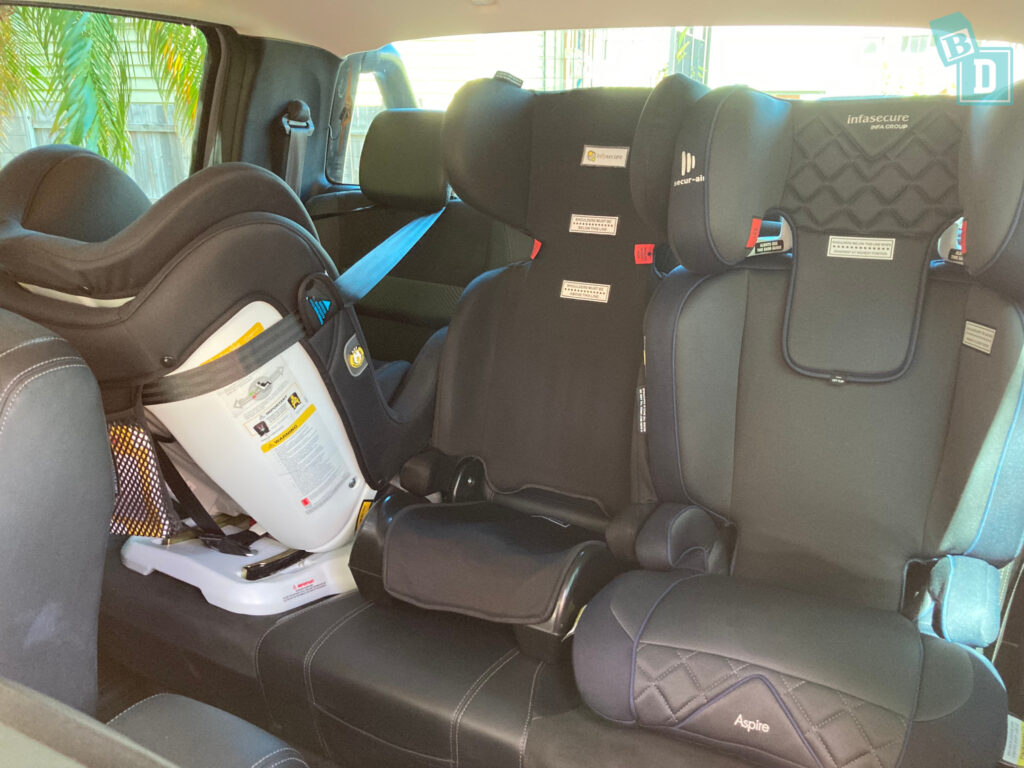
- Lowering the seat back Whether the seat back is one single piece or it is split 40:60. One single piece makes installation very difficult. If you have to pull a woven loop at either end of the seat back both at the same time to drop it forward, then it is very difficult to reach and installation is much harder. A single loop is much easier.

- Space in the second row You have to get up into the rear row of seats so you need room to work. Also when the backrest is forward you need the physical space in the back for you, two or three child seats and the backrest if it is the type that folds forward. Also, despite the huge size of dual-cab utes many of them do not have much space for front passengers once you have a rear-facing child seat or infant capsule installed!
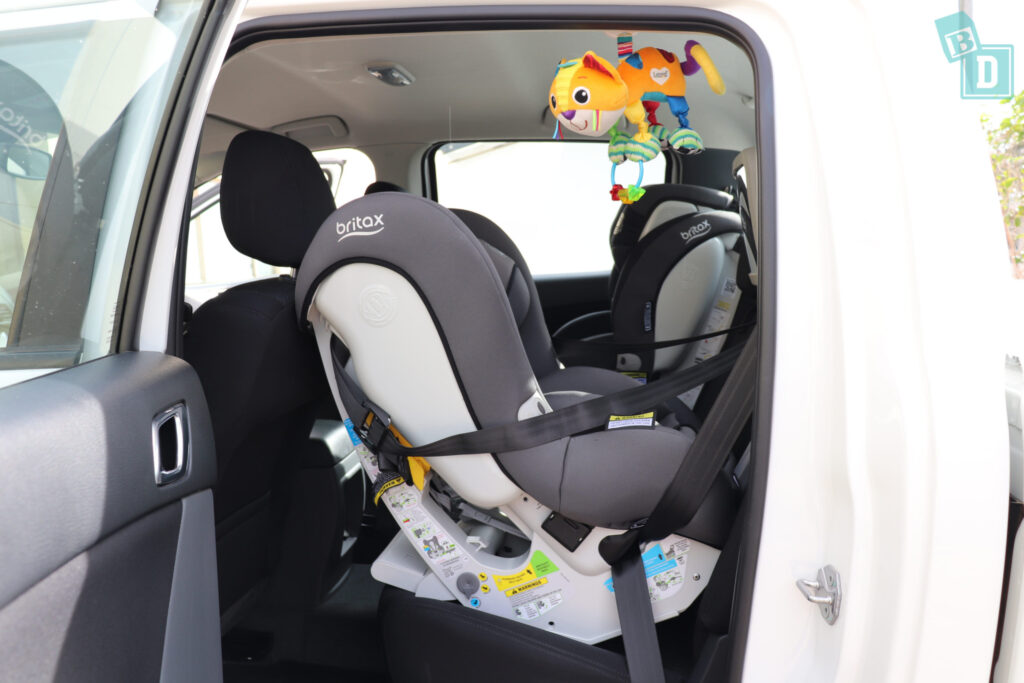
- The type of top tether anchorages Whether they are metal anchorages or woven fabric loops.
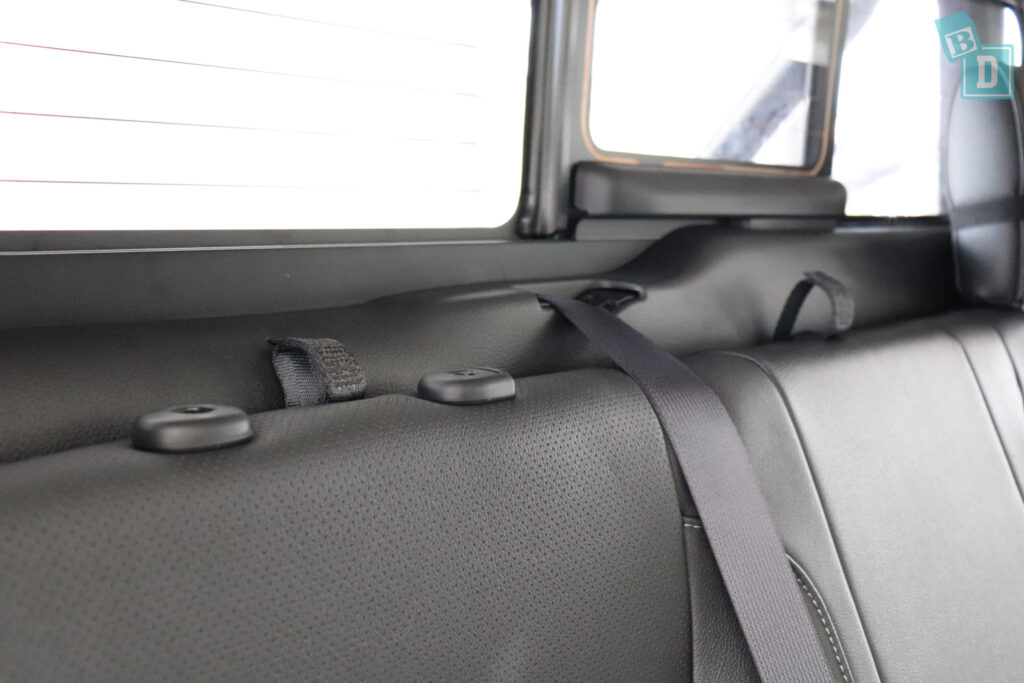
- ISOFix Whether this fastening system is available or you have to use seatbelts.
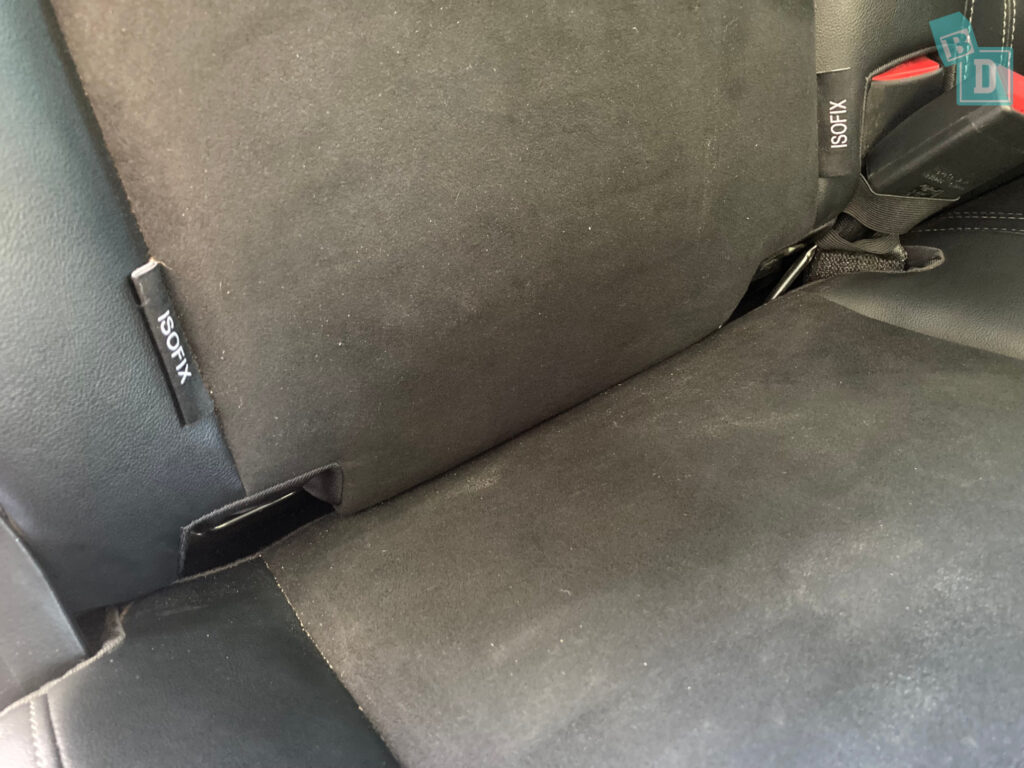
Dual cab utes ranked from best to worst for ease of child seat fitting:
Mitsubishi Triton
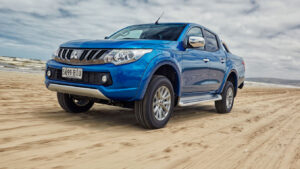
I found the Mitsubishi Triton by far the easiest ute to install child seats. It has ISOFix and top tether anchorages for the outer two rear seats only, so you can only have two tethered child seats in the Mitsubishi Triton.
Whether it was intentional or not, it appears the designers have put some thought into it!! The two metal top tether anchor points are behind the backrest, there is a small fabric loop in the seat back that you pull to bring the whole backrest forward. So far so good!
Even better, there's another way to access the top tether anchorages that is in no other ute I have tested. In the central seatback, you bring down the armrest exposing a zip on either side that allows you to slide your hand through to reach the top tether anchorages. GENIUS!! This feature in the Triton made the job so much easier than other utes that have top tether anchorages behind their seat backs.
The cab of the Triton is very spacious, so it does give you a lot of space to work in. I also found I could bring the front passenger seat right forward and step through to access the middle rear seat!
If you need to carry a third-child (if they are the correct height and age) you can put the Infasecure Versatile Folding Booster seat in the central seat as that does not require a top tether anchorage.
GWM Cannon-L Ute

The GWM Cannon-L Ute is the second easiest ute to install child seats in, it's quite straightforward and the Cannon has a really spacious cab making it easier because you have more space to work in and it's a great option for families needing more legroom too. The Cannon has two metal top tether anchor points behind the backrest, which comes forward in one piece. Connecting the top tethers is easy but once you click the backrest back into place it can be a bit tricky to tighten the top tether straps adequately with some child seats.
You can only instal two tethered child seats in the back of the GWM Cannon Ute, if you need to carry a third-child (if they are the correct height and age) you can put the Infasecure Versatile Folding Booster seat in the central seat as that does not require a top tether anchorage.
Ford Ranger

In third place the Ford Ranger! Like the GWM Cannon-L it has a one-piece backrest that is released by pulling a strap on the driver's side, but there is less space in the cab for installing and for passengers legs. Also like the GWM Cannon-L ute, there is no central top tether anchorage, so the Ranger can only take two child seats. If you need to carry a third-child (if they are the correct height and age) you can put the Infasecure Versatile Folding Booster seat in the central seat as that does not require a top tether anchorage.
The reason it ranks below the Cannon is the lack of cabin space and legroom and above the VW Amarok because the VW Amarok has no rear airbags.
VW Amarok
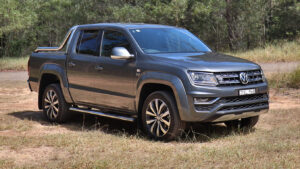
In fourth place, the VW Amarok, there are ISOFix points in the two rear outer seats and there are three metal top tether anchorages situated on the back of a one-piece backrest. So you have to bring the whole backrest forward. To do this you have to move both front seats backrests and bases into their furthest forward positions.
Then there is a tab on either end of the rear backrest which both need to be pulled at the same time so you either need two people or longer arms than me!
You cannot rest the seat back in its upright position without it clicking back into place. So I found it best to use a wedge rested in the mechanism whilst I installed the child seats, connected the ISOFix and top tethers and then took the wedge out when I was ready to lock the seat-back into position.
I found it worked better to install all your child seats at the same time while you have the backrest down, connect all your top tethers, then rest the seat-back in position using a wedge in the mechanism, install the ISOFix, remove the wedge and lock seat-back into position then adjust ISOFix and top tether straps. Trust me, this is not fun in summer!
In joint 5th place:
Isuzu D-MAX

The Isuzu D-Max. The D-Max is another ute that can only have two tethered child seats installed in the back. It has Isofix in the two outer rear seats and unfortunately the top tethers are two woven loops behind the outer seats headrests the you pass the top tether strap through and connect them to a centra metal top tether anchorage point behind the central headrest.
There is no evidence as to how a single top tether anchorage bears under the strain of multiple child seats on it. Or what happens to a child seat that is tethered from the side like that in the event of an accident. It would not be legal to have a single top tether anchorage in a car and I am not sure how well tested this setup is to see how a child seat would move around in the event of an accident when tethered at the side like this. My initial concern would be that it is a great load on the prongs of the headrest.
This is really very fiddly to use and incredibly difficult to get the top tether straps adequately tight. This is the reason it ranks below the Triton, Cannon, Ranger and Amarok.
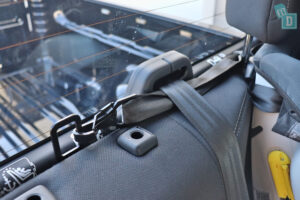
If you need to carry a third-child (if they are the correct height and age) you can put the Infasecure Versatile Folding Booster seat in the central seat as that does not require a top tether anchorage.
Mazda BT-50
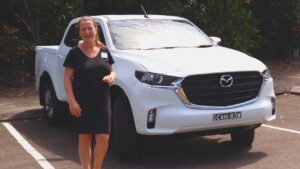
The Mazda BT-50 shares the same platform as the Isuzu D-Max, so it can only have two tethered child seats installed in the back. It has Isofix in the two outer rear seats and the top tethers are two woven loops behind the outer seats headrests the you pass the top tether strap through and connect them to a central metal top tether anchorage point behind the central headrest. According to the manual this central metal anchor point cannot be used as a top tether anchorage for the central rear seat.
There is no evidence as to how a single top tether anchorage bears under the strain of multiple child seats on it. Or what happens to a child seat that is tethered from the side like that in the event of an accident. It would not be legal to have a single top tether anchorage in a car and I am not sure how well tested this setup is to see how a child seat would move around in the event of an accident when tethered at the side like this. My initial concern would be that it is a great load on the prongs of the headrest.
If you need to carry a third-child (if they are the correct height and age) you can put the Infasecure Versatile Folding Booster seat in the central seat as that does not require a top tether anchorage.
Threading the top tether straps through the woven loop and attaching it to the central one is really very fiddly. Then it is incredibly difficult to get the top tether straps adequately tight. This is the reason it ranks below the Triton, Cannon, Ranger and Amarok.
Toyota Hilux
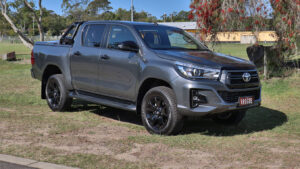
The Toyota Hilux, which actually brought me to tears when installing child seats in the back 🙁 There are ISOFix in the two outer seats and Toyota says this model is only suitable for two child seats. When it comes to the top tether anchorages, like the Isuzu D-Max and Mazda BT-50 you feed the top tether straps between the headrest pins and through a webbing loop and then across to the central metal top tether anchor point.
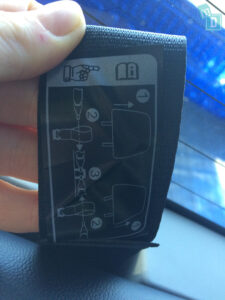
You physically can not tighten the top tether strap enough because the adjustor block on the top tether straps gets stuck on the woven loop. It is THE MOST frustrating thing, leaving you in a powerless position as a parent knowing because of a bad design, you can not tighten the top tether strap adequately enough so that in an accident you will not have provided your child with a safe child seat!
There is no evidence as to how a single top tether anchorage bears under the strain of multiple child seats on it. Or what happens to a child seat that is tethered from the side like that in the event of an accident. It would not be legal to have a single top tether anchorage in a car and I am not sure how well tested this setup is to see how a child seat would move around in the event of an accident when tethered at the side like this. My initial concern would be that it is a great load on the prongs of the headrest.
In joint last place:
Nissan Navara
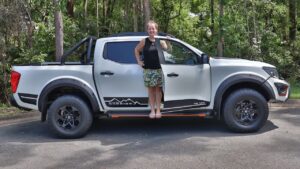
I fit two child seats in the back of the Nissan Navara and I found that installing the child seats wasn't the simplest thing!
When it comes to top tether anchorages, there are three small woven loops behind the rear headrests, attached to the frame of the car. To fit a child seat into the outer seat position you pass the top tether strap under the headrest, through the loop behind the headrest and then across and connect it onto the woven loop behind the central seat headrest.

I have a lot of concerns about the difficulty in adequately tightening the top tether straps, potential metal clips on fabric causing fraying over time and the tugging effect in an accident on moving woven loops. Installing two child seats in the Navara was very fiddly and difficult.
Mercedes-Benz X-Class
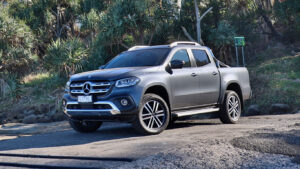
In the Mercedes-Benz X-Class, there is ISOFix in the two outer seats, all within plastic guides and nice and easy to connect to.
There are top tether anchorage woven loops for all three second-row seats, between the headrest prongs. They are woven loops rather than metal bars, just like in the Nissan Navara, but they are slightly bigger in the X-Class.
You have to post the top tether strap through the loop on the chair you are putting the child seat in and then across to the loop on the seat to the left or right of it and attach the clip on there.
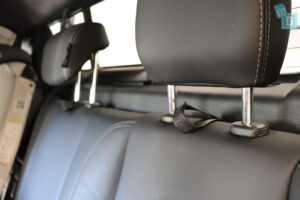
I was concerned with this method of top tether anchorage because I found them really quite difficult to use. Getting the top tether strap through the loops is not easy because of the small space you are working in and connecting and disconnecting off the second loop is difficult too.
Also, I was worried that over time the metal top tether clip against the woven loop will wear away at it, possibly causing fraying that could snap in an accident.
Tightening the top tether strap to the required amount in such a small space, especially once more than one child seat is installed is very difficult too!
There was room for three child seats in the back of the X-Class, but installing three child seats wasn’t simple, I found I had to be inside the cab to reach around and do it all and it was all quite confined. Also, the logistics of getting a top tether clip through the webbing loops was very fiddly and difficult and tightening them almost impossible!

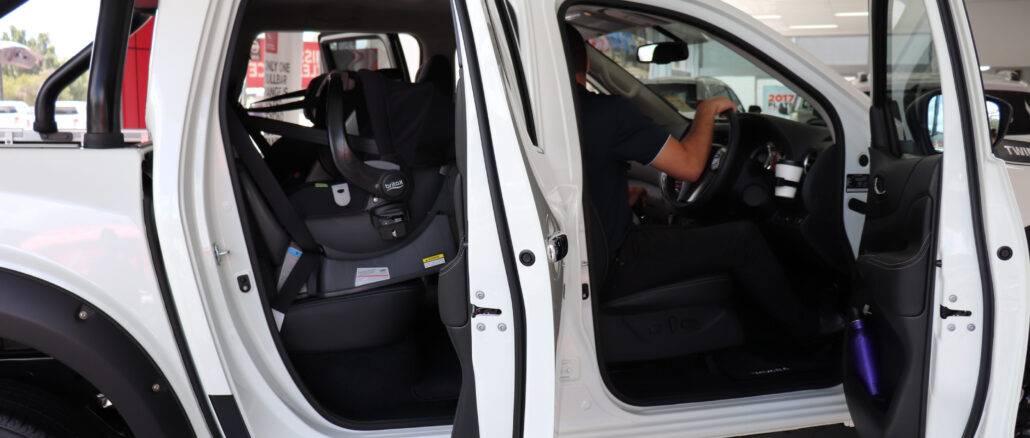
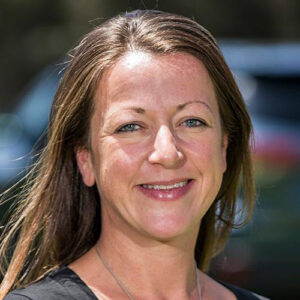
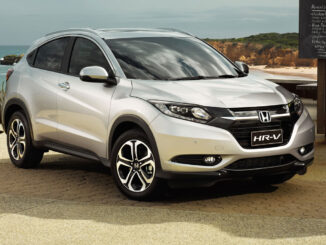
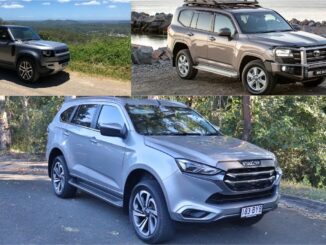
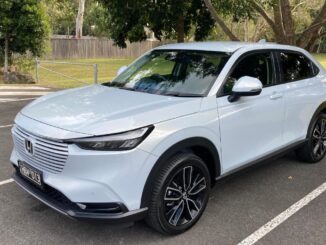
Hi,
Where did you purchase the anchor points for the BT-50? I can’t find these anywhere.
Thanks
They usually come with the child seat. Your local child seat fitter or failing that baby store will be able to supply them
Does anyone have 3 car seats across the back of a LandCruiser 79 series dual cab?
Justine,
Did you get any info on this? We are wanting to know the same thing.
Great article which sums up the cars well!
I am seriously wondering if anyone who designed these systems actually ever tested installing a car seat into them?? Shouldn’t this be a basic rule that if you design a child restraint system that you should have to test it with at least 5 different car seats? I have just tried to install two car seats into a Mazda BT-50 and there is no physical way to tighten the top tether strap sufficiently for a safe fixing. This is a major design flaw as who is the most likely purchaser of a dual cab ute??? Surely a family!?!?! (Let’s face it, no-one else would settle for a small, barely usable tray without the need to cater for kids in the back seat!)
We ended up having to use an extension strap on one of the seats as the adjuster is actually on the end of the tether, meaning that the provided strap is actually too small for the tether strap to pass through to adjust properly.
I am beyond dumbfounded that child restraint systems seem to be getting progressively worse in their user-friendliness, and I a dubious that the systems are getting safer as pulling a strap through a loop to a central anchor seems a lot less safe than a direct fixing to a metal anchor! What is going on????? We are fortunate enough to be able to afford multiple car seats which are installed in each of our cars, but I dread to think how hard it is on parents that need to remove and reinstall their car seats to cater for kids across multiple cars – not only is this a time-consuming (and often injury-causing) nightmare for parents, but also a huge safety concern as I know how hard it was for me to tighten everything up correctly and adequately and I know what I am doing! It’s a disgrace!! Would love to know how to get some action on this!
Thank you so much for publishing this article. We recently took ownership of our new Triton and were a bit deflated about how much the kids car seats moved. I had no idea about the little zippers, genius!
Thanks for this article on the various dual cab Utes. We have an VW Amarok and having difficulty finding a rear facing car seat that will fit without having the passenger seat that far forward would not be not be a comfortable position to sit in on a long trip. Can advise on a baby car seat which would alleviate this issue
Thank you so much for posting this article! We are purchasing a Ute as a work vehicle/second car so it’s helping us with the decision making. Are you able to tell me if a Hilux can fit the folding booster in between two car seats? A car seat installation centre told me the Hilux isn’t wide enough for three seats but just wanting to be sure.